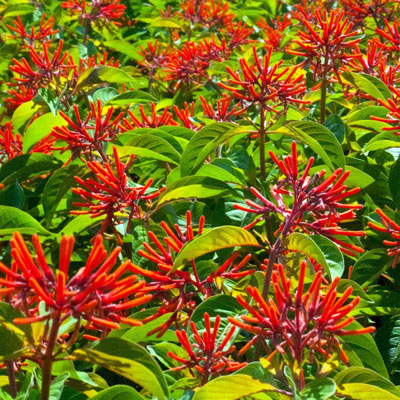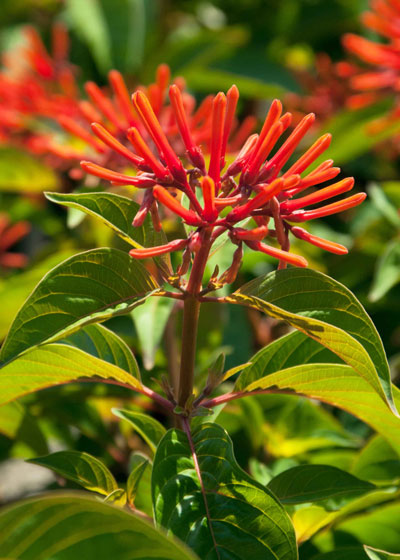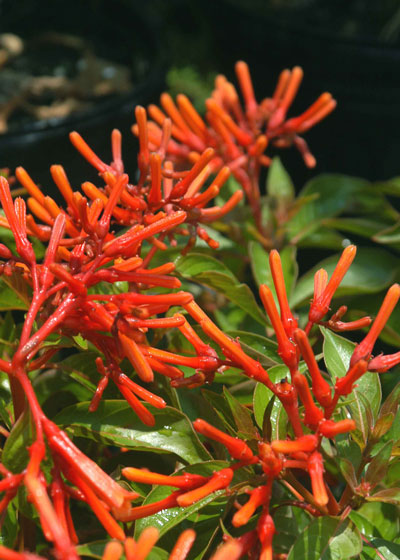Plant of the Week – September 27, 2018: Firebush

Gallon containers of firebush are ready to plant into the landscape in spring. At this point it’s too late, but make note for next year.
My Extension Service friends Greg Grant and Drs. Jerry Parsons and Steve George worked hard to bring this fine plant to the gardens of Texans almost 30 years ago, and we have been blessed by their efforts ever since.
Hamelia patens is native to tropical and subtropical America where it grows to be a large shrub or small tree. It can grow to large proportions in Deep South Texas where frosts and freezes don’t kill it back to its roots. For the middle third of the state it becomes a root-hardy perennial, and for the northern parts of the state it’s best used as an annual. (Don’t be confused into thinking it will be a landscaping shrub if it freezes where you live.)
Rather than putting the rest of its story in long narrative form, though, let me reduce it to bullets to help you quickly see why this plant deserves a spot in your gardens.

Cluster of tubular flowers of firebush show why hummingbirds would love it.
Virtues of firebush…
• Grows well in full, hot sun.
• Mature height as an annual: 18 to 24 inches. Space plants 15 inches apart in beds.
• Suited to acidic or alkaline soils, therefore to any part of Texas.
• Has no serious insect or disease problems outdoors.
• Flowers from the day you plant it in late April or May until first frost in November.

Cooler weather causes firebush leaves to turn coppery red. These will continue the change until no green is visible.
• Flowers are bright scarlet red. Foliage also takes on a deep rusty red color with fall’s cooler weather.
• Hummingbirds and butterflies love this plant.
• It’s great in beds and containers.
• Combines well with mums, purple fountaingrass and other sources of fall color.
• If you want to try to get in-ground plantings to survive the winter, mulch over their roots with shredded tree leaves immediately after first freeze. Trim off the dead tops.
• If you bring a containerized plant into the greenhouse or sunroom (preferably not a dark garage), watch out for whiteflies. They’re about the only pest I’ve ever seen on it.
